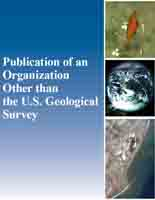In situ treatability testing was conducted in the discharge wetlands along West Branch Canal Creek at Aberdeen Proving Ground, MD. The potential for stimulating reductive dechlorination of 1,1,2,2-tetrachloroethane, tetrachloroethylene, trichloroethylene, and carbon tetrachloride in areas of preferential discharge or seeps was evaluated. Geological Survey that degrades chlorinated ethanes and ethylenes was tested using MICRO-Trac??? devices. At seep 3-4W, results of the C and BA MICRO-Trac??? treatments showed essentially no biodegradation of chlorinated solvents occurring under natural and bioaugmented conditions. Results of geochemical samples at this site indicated predominantly iron- and sulfate-reducing conditions consistent with the rapid discharge rates previously measured. The biostimulated treatment showed stimulation of methanogenic conditions and partial degradation of the parent chlorinated VOC to intermediate chlorinated compounds. The bioaugmented and bistimulated treatment showed the highest production of methane, the highest removal of parent compounds and intermediate daughter products, and the highest production of the non-chlorinated end product ethylene. This is an abstract of a paper presented at the proceedings of the 8th International In Situ and On-Site Bioremediation Symposium (Baltimore, MD 6/6-9/2005).


